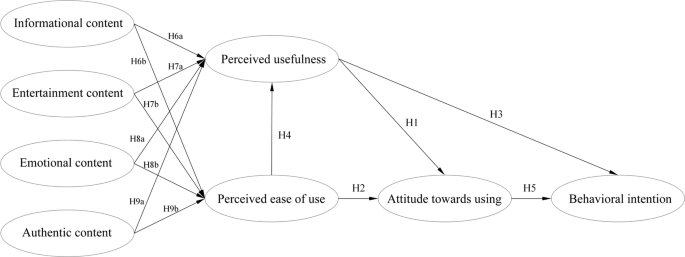BMC Psychology volume 13, Article number: 308 (2025) Cite this article
The COVID-19 pandemic has placed an unprecedented strain on healthcare systems and their workers worldwide, including nurses. Frontline nurses experienced increased levels of stress and fatigue due to extensive and prolonged work hours, inadequate protective equipment, and fear of contracting the virus. This has resulted in a rise in emotional exhaustion among nurses. Therefore, it is crucial for organizations to address these challenges to sustain workers’ psychological wellbeing for better patient outcomes.
Past studies have shown no link between responsible leadership (RL) and nurses’ occupational calling (OC) and emotional exhaustion (EE) amid COVID-9 or any situational setting. Therefore, this study evaluated the effectiveness of RL practices in improving the OC and alleviating the EE of nurses working in the COVID-19 ward of 94 government healthcare settings, including rural health centers (RHCs) and special COVID-19 response centers (CRCs), in Pakistan.
The study employed a quasi-experimental pre-and post-design with responsible leadership-based interventions and a descriptive approach. Leadership practices included effective communication on COVID-19 guidelines, infection control measures, mental health support services, and others. An online questionnaire survey measured pre- and post-intervention effects using RL, OC, and EE scales. The sample comprised 289 frontline nurses, recruited via convenient sampling, who participated in a three-months program in the COVID-19 ward. Data analysis was conducted using AMOS and SPSS software, involving basic analysis and paired T-tests.
The paired t-test results revealed a significant improvement in nurses’ OC after the implementation of the RL intervention. The mean score for OC increased from 5.162 (SD = 1.151; t-value = 76.253) to 5.403 (SD = 1.054; t-value = 87.138; p < 0.001). Similarly, the intervention significantly reduced EE among nurses. The mean score for EE decreased from 4.386 (SD = 1.037; t-value = 71.879) to 3.614 (SD = 1.336; t-value = 45.987; p < 0.001). Both were statistically significant.
Policymakers may need to consider the role of leadership practices in mitigating the negative effects of the pandemic on healthcare professionals’ well-being (i.e., EE and OC).
Leadership intervention can provide healthcare workers with the necessary skills and resources to cope with the challenges of their jobs, ultimately improving the quality of care provided to patients.
The COVID-19 pandemic has put an unprecedented strain on healthcare systems and their workers worldwide, including nurses [1]. Pakistan, a developing country with a population of over 220 million people, has faced significant challenges in managing the COVID-19 outbreak [2]. Nurses, as frontline healthcare workers, have played a crucial role in managing the pandemic in Pakistan. However, they have also experienced increased levels of stress and fatigue due to their extensive and prolonged work hours, inadequate protective equipment, and fear of contracting the virus [3]. This resulted in an increase in emotional exhaustion among nurses because of poorly equipped and under-staffed facilities in the government hospitals [2, 3].
Emotional exhaustion (EE) is a psychological syndrome that results from chronic workplace stress [4]. The World Health Organization (WHO) defines it as a syndrome characterized by feelings of energy depletion, increased mental distance from one’s job or feelings of negativism or cynicism related to one’s job, and reduced professional efficacy. EE is a prevalent issue in the nursing profession, and it has been associated with adverse outcomes such as job dissatisfaction, turnover, and reduced quality of patient care [5,6,7]. The COVID-19 pandemic has further exacerbated the issue of EE among nurses. The unprecedented workload, long work hours, and the fear of contracting the virus have contributed to increased stress and burnout among healthcare workers worldwide [8]. In Pakistan, the healthcare system was already facing significant challenges before the pandemic, including a shortage of healthcare workers, inadequate resources, and insufficient funding [9]. The pandemic has further strained the already fragile healthcare system, leading to increased stress and EE among nurses [3]. According to healthcare experts [2, 10] and Pak One Health Alliance [9], healthcare organizations must constantly reinvent themselves and adapt to changing needs in a short period of time by developing leadership models. In order to achieve this, it is necessary to develop the coping skills of professionals and to gain new insights.
The WHO devised a checklist for hospital emergency response in 2011, but despite hospitals having emergency plans in place, they were not equipped to handle the challenges posed by the pandemic [11]. Nurse leaders identified several difficulties, including a lack of care strategy, shortage of personal protective equipment (PPE) and supplies, constantly changing information, shifts in cultural dynamics, and economic impact on workers. Nurse leaders acknowledged that these frequent changes impede their ability to build trust among staff and patients in the future [12]. In the context of value-based leadership approaches, responsible leadership (RL) places significant importance on addressing the diverse needs and interests of a wide array of stakeholders, including shareholders, customers, employees, suppliers, and the broader society and environment.
According to Pless [13], a responsible leader is a person who reconciles “the idea of effectiveness with the idea of corporate responsibility by being an active citizen and promoting active citizenship inside and outside the organization.” This leadership style has demonstrated the ability to yield positive impacts on employees [14] and has proven to be an effective strategy for organizations in navigating contemporary crises [15]. In addition, as an ethical and socio-relational concept that extends beyond the traditional leader-subordinate partnership [16], RL goes beyond the pursuit of performance goals and actively promotes environmentally conscious practices and community engagement in enhancing the welfare of societies [17]. For example, James and Priyadarshini [18] emphasize that RL tackles contemporary challenges like environmental disasters and health risks stemming from the disregard of societal issues.
Fundamentally, leadership models centered on economics could trigger business scandals and environmental crises, compromising long-term sustainability. Responsible leadership, in contrast, harmonizes with the interests of various stakeholders, advocating a normative approach to citizenship behaviors within and beyond organizations amid significant transformations. Therefore, this research aims to explore how responsible leadership (RL) intervening practices as coping strategy can be implemented to promote nurses’ occupational calling (OC), defined as – “a transcendent passion to use one’s talent and competencies toward positive societal impact and a sense of meaningfulness derived from working in a chosen occupational domain”, for ones’ well-being amid COVID-19 in Pakistan.
The concept of OC plays a crucial role in motivating and focusing nurses despite the significant challenges they face. Previous research has predominantly viewed OC as a stable characteristic that changes gradually over extended periods, such as across one’s career or lifespan [19]. According to Hirschi [20], OC is the core form of internal motivation and subjective career success. Elevating workers’ sense of calling does not only improve occupational meaningfulness, work identity, and self-efficacy, it also increases employee engagement. However, qualitative studies suggest that OC may also vary within shorter timeframes, particularly during crisis situations [21, 22]. In times of crisis, the pressing societal demands may evoke a sense of OC among professionals whose skills are essential for addressing those needs [21, 23]. The COVID-19 pandemic serves as an exceptional example of such an extraordinary crisis, offering a unique opportunity to explore the fluctuations in nurses’ OC within brief periods of time [24].
Previously, Esteves et al. [25] indicated that a leader perceived as transactional, transformational, and aversive contributes to Portuguese nurses’ sense of calling. However, directive and empowering leadership exhibited no relationship with workers’ OC. Furthermore, past studies have shown no link between RL and nurses’ EE and OC amid COVID-9 or any situational setting. Therefore, this study endorses the notion that RL could be essential to address this issue and improve the well-being of nurses [10, 19, 21]. RL is characterized by leaders’ complete dedication to tasks and strong demonstration of task proficiency [28]. In particular, Doh and Quigley [14] posit that responsible leaders serve as exemplary figures, subsequently bolstering the psychological commitment of employees. Voegtlin et al. [28] also affirm that responsible leaders, acting as role models, play a pivotal role in enhancing employee engagement.
Additionally, drawing on a comprehensive literature review and interpretation of RL construct, scholars [18, 26] have identified its eight dimensions, namely (1) ethical guidance, (2) work performance and effectiveness, (3) balanced processing, (4) creating value for community, (5) conceptual skills, (6) influence on transformation/change, (7) social responsibility and environmental protection, and stakeholder relationship. In other words, RL can contribute to building a sustainable workforce, enabling healthcare systems to respond more effectively to future crises [21, 27]. Generally, leaders can initiate several measures to foster a sense of OC and alleviate burnout, such as providing emotional and instrumental support, ensuring adequate staffing, promoting self-care, and implementing psychological and in-the-moment coaching intervention programs [2]. These measures can help reduce stress, improve job satisfaction, and strengthen the sense of calling among nurses [22, 23, 25]. By addressing the issue of nurse EE, leaders can create a work environment that fosters engagement, resilience, and job satisfaction, leading to increased productivity, higher quality care, and better patient outcomes [27]. Haque [29] also affirmed that enabling RL, using Kaizen Blitz or Kaizen event (e.g., rapid improvement event), could be significant approach for the organizations to defend the COVID-19 impact.
Based on this, the purpose of this study is to apply RL intervening practices (just-in-moment / action-oriented practices) inside COVID-19 wards as an immediate response for employee well-being to minimize the damaging effect of the pandemic on nurses. Specifically, the objective of this research is to explore the unidentified role of RL practices, using quasi-experimental pre-and post-design, in elevating nurses’ OC for their well-being in Pakistan during the COVID-19 pandemic. Overall, this study being experimental, intends to reach audience from different domains. As such, the work done will seek attention from organizational psychologists, HR managers, nursing management in emergencies, hospital administration, and local governmental officials. Additionally, it contributes by filling literature gap, as prior studies have not used following leadership style on OC and EE. Furthermore, it methodologically investigates RL’s effects using pre- and post-intervention approach to enhance nurses OC and alleviate EE amid COVID-19.
This study employed the quasi-experimental pre-and post-design using RL practices with descriptive approach. Respondents were 289 Pakistani nurses working in COVID-19 wards of 94 government healthcare settings, including rural health centers (RHCs) and special COVID-19 response centers (CRCs). Before the RL-based intervening practices, the authors surveyed OC and EE levels among nurses working in COVID-19 wards recruited through convenience sampling. Such that, the authors approached 750 nurses using convenience sampling technique – out of which 423 agreed. In particular, scholars have recommended that the least sample size should be equivalent to the ten times the largest number of formative indicators used to measure a single construct, or ten times largest number if structural paths directed at a specific construct in the structural model [30]. Based on this rule, the minimum requirement of sample size for current study was 30 (3 constructs multiple by 10 times). During the data collection process, 289 nurses provided consent and rest did not. Therefore, the authors surveyed total 289 nurses. The inclusion criterions were 1): frontline nurses working in COVID-19 wards/CRCs, 2): 12 h working time. The exclusion criterions were 1): Not working in COVID-19 wards/CRCs and, 2): Less than 12 h working time. Due to COVID-19, shortage of healthcare staff and placement in emergency wards, there was slight change in working hours and timing. As a result, the authors targeted nurses with 12 h working time.
The authors also confirmed whether RL practices are being applied by direct supervisor (nurse leaders) or not. Once surveyed, an advisory committee for the management was formed to address and make sure the RL practices are being undertaken during the 3 months of intervention. The RL intervening practices were carried out by the direct supervisors (nurse leaders) under the supervision of committee, composed of experts from emergency and psychiatry departments, government stakeholders, and non-governmental organizations which sponsored COVID-19 related instrumental support (i.e., PPE kits, hygiene, and test kits). The committee members were selected based on their previous rapid emergency-response experience in relevant situations i.e., SARS-1, terrorist attacks/suicide bombing, curfew, etc. The intervening practices were followed by a just-in-moment approach. The direct supervisors (nurse leaders), on the daily basis, were assigned to practice mentioned counselling and communication tasks, provision of materialistic resources, and assurance of safety and hygiene in the timely manner. Unless otherwise noted, ward visits were carried out to ensure quality control measures on random basis by the committee and to verify whether participants are receiving adequate support and have understood intervention instructions accurately.
In first phase (June, 2021), the authors surveyed 289 nurses and collected self-reported data on demographics (gender, age, experience, and marital status), RL, OC, and EE, using online questionnaire tool. The demographic information of nurses is exhibited in Table 1. In phase two (August, 2021), the intervening practices took place for 3 months (Aug-Oct, 2021), covered 12 RL practices in the COVID-19 ward of governmental hospitals in Pakistan (See Table 2). Once the specified intervening practices time ended, the authors resurveyed 289 nurses and recollected data on RL, OC, and EE.
During phase two of the intervening practices, which took place from August to October 2021, a leadership-based intervening practices were implemented to address 12 RL practices (see Table 2) in the COVID-19 ward of governmental hospitals, including rural health centers (RHCs) and special COVID-19 response centers (CRCs), in Pakistan. For example, leaders were responsible for informing stakeholders (i.e., non-governmental organizations) to arrange, prepare, and provide adequate instrumental support, and for ensuring whether healthcare workers have access to vaccines and daily updates on COVID-19 guidelines and cases. They, in coordination with committee, were liable to maintain supportive environment for healthcare workers by educating staff (if required or asked), providing access to mental health support services (by experts from psychiatry department in the committee), and minimizing the risk of exposure with regular hygiene/cleanliness in wards and monitoring and screening of healthcare workers. Additionally, they were accountable for maintaining accurate and timely documentation of patient care and COVID-19 related incidents for public awareness and for governmental stakeholders to respond quickly in case of increase in the COVID-19 cases.
However, overall, the primary goals of this three-month intervening practices were to foster nurses’ OC and curtail EE, thereby improving their well-being and overall performance in the demanding healthcare environment. The program aimed to provide nurses with the necessary tools, skills, and support to strengthen their sense of OC—the intrinsic motivation and sense of purpose associated with their nursing profession. By nurturing this calling, the program sought to enhance nurses’ job satisfaction, engagement, and resilience in the face of challenges.
Throughout the three-month duration, the program focused on 12 specific RL practices (see Table 2) that were deemed crucial for promoting OC and reducing EE among nurses. These practices encompassed various aspects of leadership, including self-care, supportive work environment, effective communication, teamwork, empathy, and personal growth. The program organizers employed a strategic approach to enhance outcomes. Notably, they prioritized flexibility in program design by adapting to nurses’ demanding schedules, providing recorded sessions, and asynchronous learning materials. Addressing the emotional stress of nurses, the program incorporated tailored components focusing on self-care, stress management, and direct guidance on coping strategies. The emphasis on peer support and collaboration through virtual platforms created an enriching environment for shared experiences and mutual learning. Furthermore, the commitment to continuous evaluation and real-time feedback allowed for a dynamic and responsive intervention, solidifying the program’s effectiveness in meeting the evolving needs of the nurses.
Firstly, the authors considered previously developed measurement scales and confirmed reliability and validity for the current research. Secondly, they used 7-point Likert scale (1 = Strongly Disagree to 7 = Strongly Agree) to get nurses’ responses on RL, OC, and EE for comparing pre- and post-intervention effects. Finally, the authors analyzed data in two parts by using AMOS and SPSS software. At first, they confirmed basic analysis of data (i.e., convergent validity, reliability, and statistical fitness). Later, after suitable outcomes, they measured pre and post intervention effects for comparison purposes using paired T-test.
Emotional exhaustion
To gauge EE level in emergency, the authors employed scale taken from Yongxin and Yimin [31]. Model items contain, “I feel frustrated on my job”, “I feel psychologically tired at work”, “working directly with people or COVID patients puts too much strain on me”.
Occupational calling
To gauge OC of nurses in emergency, the authors employed two items from Brief Calling Scale, developed by Dik et al. [32], and one item that measures calling particularly in the healthcare setting, developed by Curlin et al. [33]. Items contain, “I have a calling to help the patients recover”, “I have a good understanding of my calling as it applies to the goal of saving the patients”, and “Ensuring the quality of my work in the emergency ward is a calling”.
2.3.3. Responsible Leadership.
RL is a new research topic and developed recently in the healthcare setting [29]. Therefore, we employed RL questionnaire items, relevant to this study’s objectives, from Agarwal and Bhal [34] and Doh et al. [35]. We also modified items to fit into the healthcare context and COVID-19 emergency. Items include, “My supervisor ensures that employees receive relevant, correct, and timely information about COVID-19”, “My supervisor considers employee well-being as important outcome and listens to what employees have to say”, “My supervisor provides access to mental health support services for healthcare workers and implements infection control measures to reduce the risk of exposure and transmission of COVID-19”, and “My supervisor has employee’s best interests in mind and shows concern for availability and/or conservation of resources (i.e., Personal Protective Equipment (PPE), test kits, vaccines, etc.)”.
Demographic variable
The authors measured gender, marital status, age, and work experience as demographic variables. They measured work experience on a 5-point scale (a= “Less than one year,” b= “1–3 years”, c= “3–5 years”, d= “5–8 years”, e= “Above 8”), age level on a 4-point scale (a= “24–28 years”, b= “29–33 years”, c= “34–38 years” d= “39-Above”), marital status on a 3-point scale (a= “Unmarried,” b= “Married”, c= “Prefer not to say”), and gender as a dummy (a = woman, and b = man).
Composite reliability is described as “the extent to which a variable or set of variables is consistent in what it is intended to measure and the accuracy or dependability of measurement [36]. This study, therefore, performed reliability analysis by using Cronbach’s alpha (α). The results illustrated in Table 3 exhibits the Cronbach’s value for all constructs, and it is found that Cronbach’s value is α > 0.7. The obtained values of Cronbach’s alpha for all the variables in the study confirmed that they are internally consistent and determine the similar content of the construct.
Factor loadings of variables, average variance extracted, and construct reliability assessment were employed to evaluate the convergent validity of the constructs. According to the recommendation of Hair et al. [37], ideal standardized loading estimates supposed to be 0.7 or higher, average variance extracted (AVE) should be greater than 0.5, and reliability must be greater than 0.7 to demonstrate sufficient convergent validity. Therefore, the following minimum cut-off criteria for loadings > 0.7, average variance extracted (AVE) > 0.5, and reliability > 0.7 were selected and considered for all the constructs.
According to the Table 3, factor loading for the all constructs is greater than 0.70. Moreover, Table 3 demonstrates the items loadings, Cronbach’s alpha, composite reliability, and average variance extracted (AVE). Based on the outcomes, values of all are higher than cut-off criteria and threshold values, which show the quite good internal consistency. For example, the Cronbach’s alpha for EE for this research is 0.75 in phase one and 0.78 in phase two after intervention. The Cronbach’s alpha for nurses OC for this research is 0.71 in phase one and 0.86 in phase two after intervention. For RL, the Cronbach’s alpha is 0.70 in phase one and 0.77 in phase two after intervention. Consequently, it did not require deleting any item from the scale, because the measures were satisfactorily found reliable to proceed with further analysis.
The authors executed a CFA to calculate the distinctiveness of key constructs (RL, nurses’ EE, and nurses’ OC) and confirmed the statistical fit. Table 4 displays reasonable fit for both, pre and post intervention data. The three-factor (pre-intervention) model (X2(72) = 265.776, p < 0.005; TLI = 0.93; CFI = 0.93, RMSEA = 0.059) and three-factor (post-intervention) model (X2(73) = 259.767, p < 0.005; TLI = 0.94; CFI = 0.94, RMSEA = 0.061), both considerably fitted the data. Furthermore, as exhibited in Table 4, the three-factor model for pre- and post-intervention fitted the data considerably reasonable against the chain of alternative models. These effects tested the discriminant validity of our scales.
The paired t-test was conducted to assess the effectiveness of RL intervention in improving nurses’ OC and reducing EE in the government healthcare setting amid COVID-19 for 3 months. The study included a sample of 289 nurses working in the COVID-19 ward of government hospitals, including RHCs and CRCs, in Pakistan. The results of the paired t-test revealed a significant improvement in nurses’ OC after the implementation of the RL intervention (see; Table 5). The mean score for OC increased from 5.162 (SD = 1.151; t-value = 76.253) before the intervention to 5.403 (SD = 1.054; t-value = 87.138; p < 0.001) after the intervention, which was statistically significant.
Additionally, the intervention was found to significantly reduce EE among nurses. The mean score for EE decreased from 4.386 (SD = 1.037; t-value = 71.879) before the intervention to 3.614 (SD = 1.336; t-value = 45.987; p < 0.001) after the intervention, which was also statistically significant.
The present study’s findings have significant implications for both theoretical and practical aspects of RL in the government healthcare setting. The results contribute to the existing body of literature on RL, specifically highlighting its role in improving the psychological well-being and OC of healthcare professionals in high-stress environments.
This study, being experimental (289 nurses surveyed twice- pre and post intervention), contributed to RL literature by filling literature gap, as prior studies have not considered following leadership style to enhance workers’ OC and EE amid emergency situation. Further, it added to the literature methodologically by experimenting pre- and post-intervention effects of RL on Pakistani nurses’ OC and EE. Theoretical implications of this study suggest that RL practices have a positive impact on employee well-being, specifically in reducing EE and improving OC. The present study’s findings align with previous research on the importance of RL. For instance, a study by Doh et al. [35] found that RL positively relates to employee job satisfaction. Following RL style elevates workers’ motivation and job satisfaction, ultimately leading to improved performance at individual and organizational levels. Similarly, a recent study by Haque [29] found that RL is associated with employee well-being and organizational sustainability in the healthcare sector. Haque affirmed that enabling RL, using Kaizen Blitz or Kaizen event (e.g., rapid improvement event), could be significant approach for the organizations to defend the COVID-19 impact. In particular, this study, followed by just-in-moment approach, contributed theoretically and methodologically. It applied RL as an immediate response for employee well-being. Consequently, the damaging effect of the pandemic on nurses was less or minimum after intervention.
From a practical standpoint, the results suggest that healthcare organizations should prioritize the development and implementation of RL practices to improve the well-being and OC of their employees. Enabling RL could be significant approach for healthcare organizations to defend against the impacts of COVID-19 related pandemics. The present study suggests that the implementation of RL practices in government hospitals’ emergency wards is crucial to tackle the COVID-19 related pandemics, supported by the following two justifications. Firstly, scholars have proposed that RL recognizes employees as vital stakeholders and leverages their unique perspectives to maintain their motivation and well-being [38,39,40,41]. Therefore, this paper contends that incorporating RL into emergency wards enhances the well-being and OC of nurse employees, owing to its individualistic approach to tackle the COVID-19 pandemic crisis. Secondly, from a stakeholder perspective, the general underlying idea is that RL can recognize and respond to the demands of critical socio-economic challenges (e.g., COVID-19 pandemic) within the business environment, enabling hospitals to respond more efficiently [13, 16, 42]. Thus, emergency wards in healthcare organizations equipped with RL practices may aid in promoting sustainability within the organization while simultaneously assisting surrounding communities to overcome the COVID-19 pandemic.
In both cases, the study’s findings have recommendations for policy development in the healthcare sector. Policymakers and practitioners may need to consider the role of RL practices in mitigating the negative effects of the pandemic on healthcare professionals’ well-being and OC, ultimately and indirectly improving the patient-care and alleviating loss of organizational resources. For example, according to scholars [21, 22], elevating workers’ sense of calling does not only improve occupational meaningfulness, work identity, and self-efficacy, it also increases employee engagement. Likewise, reducing EE may lead to job satisfaction and improved quality of patient care [5,6,7]. Therefore, by considering the RL practices with required changes according to an organization’s strategic climate, policymakers and practitioners can utilize limited resources appropriately and minimize damaging effect of similar pandemics on their workers directly, and society indirectly.
To further enhance the practice-oriented (just-in-moment) approach of RL intervening practices in the government healthcare settings, it is recommended to incorporate more interactive and participatory activities in the program. This can be achieved by facilitating regular discussions and sharing of experiences among healthcare workers, encouraging them to reflect on their work and learn from each other’s experiences. Moreover, the program can include more hands-on training and simulation exercises that simulate the challenges and situations encountered in the COVID-19 ward. This will provide healthcare workers with a more realistic and practical approach to dealing with the stress and demands of their job, while also helping them develop effective coping mechanisms.
Additionally, it is crucial to involve healthcare workers in the design and implementation of the RL intervening practices [43]. By actively engaging with the frontline workers, the intervening practices can be tailored to meet their unique needs and challenges, thus ensuring its effectiveness and relevance. Finally, it is recommended to establish a continuous feedback mechanism to monitor the effectiveness of the practices and make necessary adjustments. This will enable healthcare organizations to assess the impact of the program and continuously improve the quality of care provided to patients in the COVID-19 ward. By adopting these practice-oriented approaches, RL intervening practices can provide healthcare workers with the necessary skills and resources to cope with the challenges of their job, ultimately improving the quality of care provided to patients.
While the results of the study are promising, it is important to acknowledge the limitations of the RL intervening practices in the government healthcare settings. Firstly, the study had a relatively small sample size (n = 289), limiting the generalizability of the findings. Further research with larger sample sizes from diverse populations and control group are necessary to validate the effectiveness of the intervening practices. Secondly, the study only focused on the short-term impact of the intervening practices (3 months). A longer-term follow-up study is necessary to determine if the intervening practices’ positive effects persist over time. For example, according to Haque [29], enabling RL could take 6–16 months of timeframe to attain significant outputs of sustainability in healthcare sector, depending on an organization’s strategic climate to enable comprehensive training and development on RL. Thirdly, the study was conducted in government hospitals, including RHCs and CRCs in Pakistan, limiting its generalizability to other healthcare settings and cultures. It is essential to conduct similar studies in other countries and healthcare settings to determine the intervening practices’ effectiveness in various contexts. Lastly, the study only focused on the impact of the RL intervening practices on nurses. The effects of the practices on other healthcare professionals, such as doctors and support staff, were not evaluated. Future studies should include other healthcare professionals to determine the practices’ effectiveness on a broader scale.
Despite the aforementioned activities, it is crucial to acknowledge certain encountered limitations during the implementation of the intervention program. Time constraints posed challenges as nurses in the COVID-19 ward juggled demanding work schedules, impacting their availability for program participation and potentially influencing the depth of skill development. Resource limitations, intensified by the ongoing pandemic, strained healthcare resources, potentially affecting the availability of crucial elements like trainers and materials, and consequently, the program’s reach. The emotional stress endured by nurses in the COVID-19 ward, exacerbated by their intense and challenging work environment, presented difficulties in addressing emotional burdens within the program’s limited timeframe.
In conclusion, the RL intervening practices in the government healthcare setting amid COVID-19 has shown promising results in improving the OC and curtailing the EE of nurses. The study has demonstrated that the intervening practices have significantly increased the nurses’ sense of OC while reducing their EE levels. Overall, while the RL showed promising results, future studies should address given limitations to provide a more comprehensive understanding of the program’s effectiveness in the government healthcare settings.
The datasets used during the current study are available upon reasonable request from the authors.
6.4. Conflicts of Interest.
The authors declare no conflict of interest.
We thank internal and external stakeholders for supporting our research. We are grateful to governmental and non-governmental organizations for providing resources to government hospitals and staff during emergencies.
This research received no external funding.
According to the International Committee of Medical Journal Editors (ICMJE) [44], if the purpose of trial is to examine the effect only on the providers (for example, provider knowledge or attitudes), then registration is not necessary. As our intervention also examined the effect of responsible leadership on the PROVIDERS’ (nurses’) OC and EE, not the providers’ patients, as a result, the registration is not required. However, the research was officially permitted by the research ethics board of Zhejiang Gongshang University (Reference No. 202105/IRB/54) and adhered to the ethical principles outlined in the Helsinki Declaration for medical research involving human subjects.
>Please be informed, nurses were recruited using convenience sampling and all responded willingly with consensus after reassurance of data confidentiality. The authors also described research goals verbally and in virtual survey, and requested for consensus before continue with survey questions. A virtual informed consent prior to survey questionnaire was taken.
Not applicable.
The authors declare no competing interests.
Springer Nature remains neutral with regard to jurisdictional claims in published maps and institutional affiliations.
Open Access This article is licensed under a Creative Commons Attribution-NonCommercial-NoDerivatives 4.0 International License, which permits any non-commercial use, sharing, distribution and reproduction in any medium or format, as long as you give appropriate credit to the original author(s) and the source, provide a link to the Creative Commons licence, and indicate if you modified the licensed material. You do not have permission under this licence to share adapted material derived from this article or parts of it. The images or other third party material in this article are included in the article’s Creative Commons licence, unless indicated otherwise in a credit line to the material. If material is not included in the article’s Creative Commons licence and your intended use is not permitted by statutory regulation or exceeds the permitted use, you will need to obtain permission directly from the copyright holder. To view a copy of this licence, visit http://creativecommons.org/licenses/by-nc-nd/4.0/.
Kumar, N., Wang, C. & Bhutto, M.Y. Responsible leadership practices amid COVID-19 to foster nurses’ occupational calling and curtail emotional exhaustion: a pre-and post-intervention effects analysis. BMC Psychol 13, 308 (2025). https://doi.org/10.1186/s40359-025-02544-z











